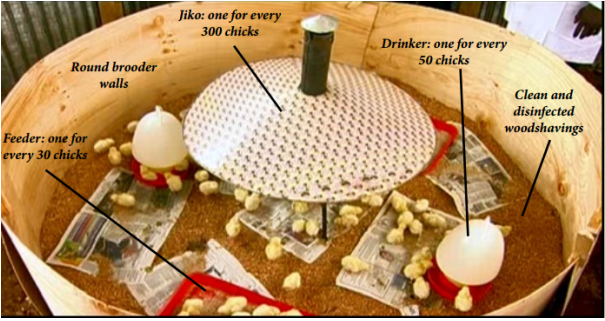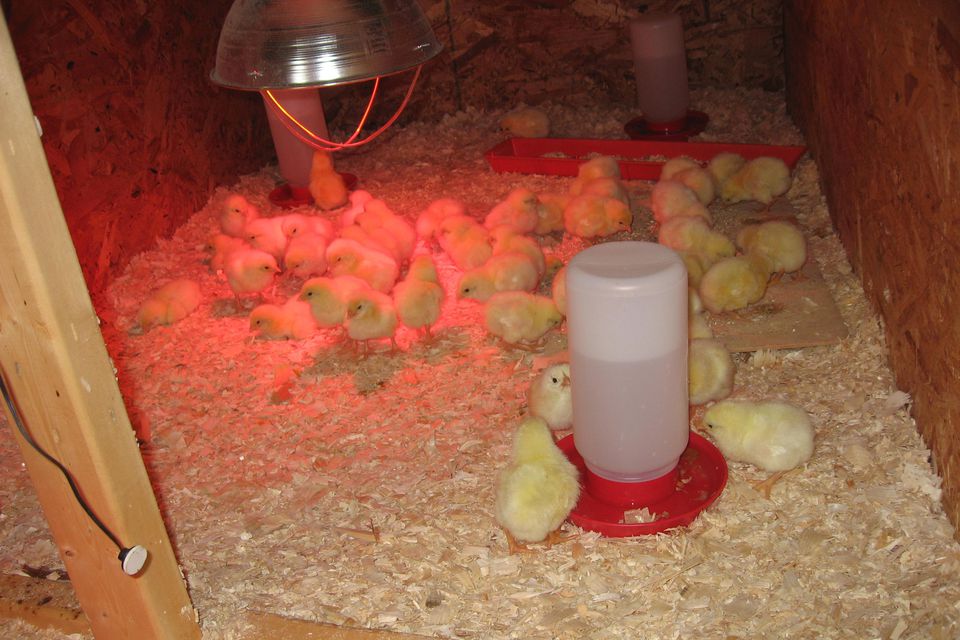The toughest phase in raising your kienyeji chickens is during the chick brooding. This is the period when they are most delicate and where mistakes can be quite costly.
Many farmers prefer to start raising the chicks on their own right from the first day when the chicks are one day old. It is generally cheaper to acquire chicks at this stage so you can build a fairly large flock within a very short period of time.

However, the chick brooding stage requires special as well as intensive care in order to boost the survivability of the chicks. The problem is that many of the farmers who acquire the chicks are generally insufficiently prepared for the first few weeks. As a result, they end up incurring high mortality and huge losses that can easily be avoided.
The first few weeks of the chicks’ life is important not just for the survivability. The chicks may survive but if you didn’t give them optimal care during this stage, it may still end up impacting their physiological and development processes and thus impacting their yield.
One of the most critical factors during this stage is warmth. It is imperative that the chicks are given optimal warmth and protection. In natural brooding setting, the mother’s body and feathers is sufficient to supply the kids with optimal natural warmth.
However, in an artificial brooding environment, you have to try and recreate this environment to boost the chicks chances. You have to ensure that you are getting the artificial brooding conditions. That will require consulting widely and acquiring the right equipment for the task. The type of brooding conditions that you provide will have an impact on the chicks’ growth.
The Brooder
To prevent the chicks from huddling in one corner and thereby overcrowding and getting injured or suffocated, it is advisable that you use the brooder rings which are quite advantageous as they do not have corners.

Additionally, you must make sure that you have fumigated and disinfected the poultry house before you introduce the chicks into the poultry house.
The chicks are generally quite sensitive and delicate while they are still young so the farmer must go the extra mile to provide a sterile environment where they can grow safely.
Make sure that the litter and the bedding is disinfected and dried before they are spread on the brooder ring to line the flooring.
You can also use a newspaper layer to line the litter in the poultry house. This should also be sprayed lightly with some disinfectant. Make sure that you change the newspaper lining on a regular basis, at least after every two to three days. When it comes to raising day old chicks, you must never compromise on the hygiene.
Temperature
Chicks are covered in light feathers that offer very little insulation from the temperature extremes. This makes them fully reliant on the external heat source for survival. If you don’t provide optimal brooding temperatures, the chicks are either going to die from cold or heat stress.
Low temperatures will stunt the growth of the chicks as the feeds they take in is converted into heat instead of being used to power their growth. In brooding conditions, you must there provide a reliable external heat source such as infra-red heating system or just the normal jikos or ovens that will provide the chicks with sufficient heat.
The heat source provided in the brooding area must be centrally situated inside the brooder ring. During the first week, maintain the temperatures at 32 degrees Celsius.
When introducing heat into the brooding area, make sure that you carefully observe the chick behavior. If it is too hot inside the brooder ring, the chicks will move away from the heat source. If it is too cold, the chicks are going to huddle together under the heat source. If the temperatures are ok, the chicks will be evenly distributed inside the brooder ring.
Lighting
The brooder must be supplied with adequate lighting. The lighting is necessary to help the day old chicks locate the food and water inside the brooder ring. During the first 7 days after the chick placement, make sure that you provide bright lighting inside the brooder ring.
However, as the chicks grow older, make sure that you reduce or step down the lighting gradually so as to prevent cannibalism in the birds.
Ventilation
You must maintain very good air quality inside the brooder ring. This is particularly important if you are using the charcoal burners to keep the poultry house warm. A high accumulation of carbon monoxide in the poultry house is likely to lead to gas poisoning. On the other hand, a high concentration of ammonia gas in the poultry house is likely to cause ammonia burns and blindness in your chickens.
Vaccination
We have provided a vaccination schedule for your kienyeji chicken on this website that you must make sure you follow religiously. Also, make sure you provide the chicks with multivitamins before and after the vaccination.
Feed and Water
You can start your chicks off with a starter mash and eventually, you will introduce them into a grower mash. Make sure you provide the chicks with clean and fresh water at all times. Chickens will never forgive you if you fail to meet their water needs. It is likely to impact their development and productivity over the long term. During the early stages, you can also supply the chicks with a chick booster which is a mixture of glucose and vitamins.